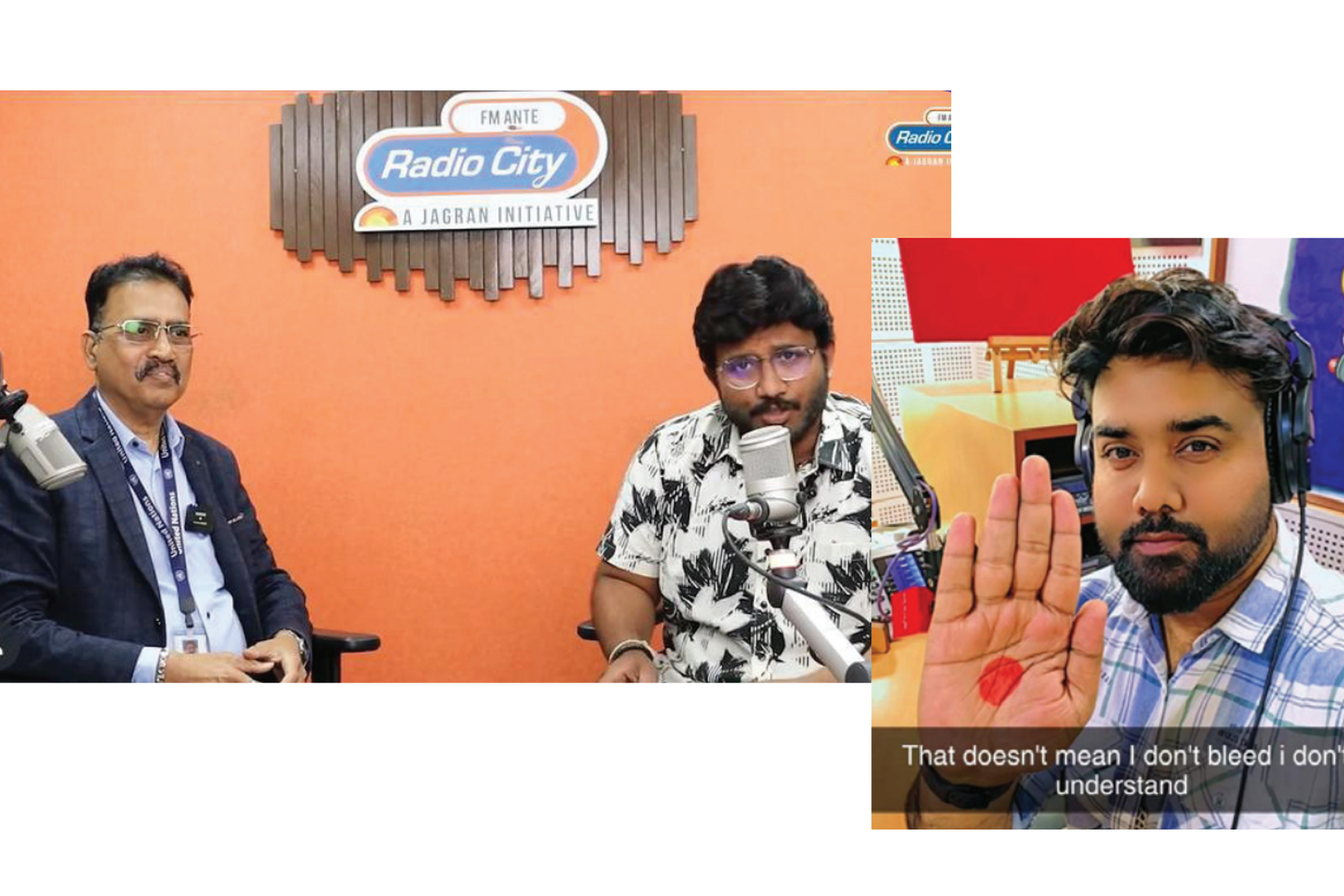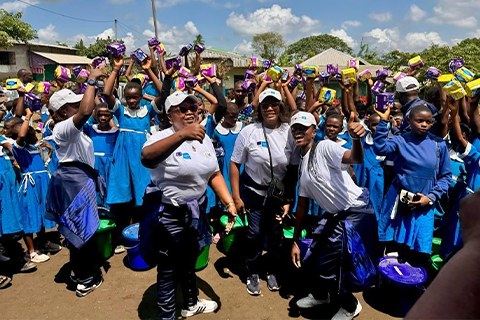Key takeaways
- Media is one of the strongest multipliers we have.
- The movement has learned how to work with the media – and the media has learned to listen.
- Media coverage in 2025 reflected a growing maturity of the movement.
<p class="text-size-medium text-weight-semibold">The media has been an ally to the MH Day movement for a long time. But in 2025, its role became even clearer. Across regions and platforms, 25,026 media pieces reported on MHH topics around MH Day – an increase of nearly 7% compared to last year.</p>
<p class="text-size-regular">This matters not just because of the higher number itself, but because <span class="text-weight-semibold">media is one of the strongest multipliers we have</span>. When a single event or announcement is picked up by radio or local press, its message reaches far beyond the room where it happened. When national outlets report on new commitments or policies, they help shift public awareness, push back stigma, and influence decision-makers. And when global media discuss MHH, it signals that the world is increasingly ready to talk about menstruation openly.</p>
<p class="text-size-regular">In short: media turns MH Day momentum into reach, relevance, and change. This year’s global reach numbers showed this clearly. While engagement on social media was lower than in 2024, the overall global reach increased – only <span class="text-weight-semibold">because media engagement rose again</span>.</p>
<p id="a1"> </p>
<h2 class="heading-style-h4">Why MH Day makes news</h2>
<p class="text-size-regular">There are several reasons why journalists, editors and broadcasters continue to pick up MH Day stories:</p>
- <span class="text-weight-semibold">MH Day is part of editorial calendars.</span> Many outlets now expect menstruation to be a topic in late May and proactively look for stories, voices and data, especially in the Global South.
- <span class="text-weight-semibold">Events and community activities create local relevance.</span> When something happens on the ground, media has something concrete to report on.
- <span class="text-weight-semibold">Governments and institutions use MH Day as a moment to make announcements.</span> This gives journalists strong news hooks.
- <span class="text-weight-semibold">MH Day partners have become skilled at engaging the media.</span> Press briefings, interviews, and media outreach are now coordinated efforts rather than exceptions.
- Activists and organisations use MH Day to <span class="text-weight-semibold">make their advocacy heard</span> by putting forward demands to governments or calling them out on unmet commitments. These demands often appear in opinion pieces, public statements, or events and campaigns that the media can feature.
<p class="text-size-regular">In other words: the movement has learned how to <span class="text-weight-semibold">work with media</span> and <span class="text-weight-semibold">media has learned to listen</span>.</p>
<p id="a2"> </p>
<h2 class="heading-style-h4">What media coverage looked like in 2025</h2>
<p class="text-size-regular">Media coverage in 2025 reflected the movement’s growing maturity. Besides reporting on events, many outlets addressed why menstrual health and hygiene matters and the systemic changes connected to it. The result? More meaningful stories, stronger public narratives, and greater visibility for local and national efforts alike.</p>
<p class="text-size-regular">Many media outlets <span class="text-weight-semibold">reported on new programmes and policy action</span>. Here are a few examples:<br>
The Times of India reported on the Kerala state government’s commitment to expand menstrual cup access.<br>
National news in the United States covered Pennsylvania’s announcement to provide free menstrual products in all state parks. </p>
<p class="text-size-regular">Newsrooms also explored cultural attitudes, stigma, and lived experience in <span class="text-weight-semibold">opinion pieces</span>, helping shape the public conversation. Examples:</p>
- Al Jazeera asked: “Why are we still hiding periods in 2025?”
- Forbes covered research on period pain and its impact on women in professional football.
- El País published a widely shared feature on the history and ingenuity of managing periods across time.
- Tagesschau highlighted what research says about period products.
<p class="text-size-regular">Grassroots and NGOs also reached the media with <span class="text-weight-semibold">advocacy work and events</span>:</p>
- Inooro TV in Kenya covered a local MH Day event.

- AlWihda (Chad) reported on a joint MH Day event.
- In India, 12 radio jockeys across seven FM networks championed MH Day messages.

<p class="text-size-regular">Organisations increasingly use MH Day as a strategic moment to make <span class="text-weight-semibold">public demands to governments</span>:</p>
- Uganda’s national MH Day event included a press briefing coordinated by Deutsche Welle, UNICEF and partners to ensure policy messages reached national and regional audiences.</p>

<p class="text-size-regular">Together, these examples show how media helps our movement gain recognition — more than 25,000 times worldwide.</p>
<p id="a3"> </p>
<h2 class="heading-style-h4">How media coverage changed from 2024</h2>
<p class="text-size-regular">Like every year, some regions are more active than others. North and Central America again accounted for the largest share of media coverage (43%), followed by Asia (21.7%) and Europe (16.6%). South America contributed 9.7%, Africa 5.9%, and Oceania 3.1%.</p>
<p class="text-size-regular">It’s worth noting that the high value for North America is partly due to <span class="text-weight-semibold">how web hosting affects media statistics</span>. Many outlets in Africa and elsewhere use U.S.-based servers, meaning their contributions are technically counted under North America.</p>
<p class="text-size-regular">We also saw shifts compared to 2024:</p>
- Asia increased its share by 4.09%.
- North and Central America saw a decrease of 6.42%.
<p id="a4"> </p>
<h2 class="heading-style-h4">How media amplifies the movement</h2>
<p class="text-size-regular">Now, consider the effect media has on MH Day. It doesn’t simply report on MHH – it <span class="text-weight-semibold">expands our work</span>.</p>
- An event that reaches 50 or 100 people becomes a story that reaches thousands or millions.
- A policy announcement becomes a public accountability moment.
- A community festival becomes an entry point to talk about dignity and access.
- An opinion piece becomes part of shaping public understanding.
<p class="text-size-regular">Media also helps bring <span class="text-weight-semibold">new voices</span> into the movement – people who may not follow MHH organisations online but who hear, watch, or read the news.</p>
<p id="a5"> </p>
<h2 class="heading-style-h4">Looking ahead</h2>
<p class="text-size-regular">The growth curve in media engagement is still rising, but the pace is beginning to stabilise. This may reflect a maturing movement or growing political pushback in some regions. Either way, it reinforces how important it is to keep menstrual health and hygiene visible and relevant in public dialogue.</p>
<p class="text-size-regular"><span class="text-weight-semibold">You helped make MHH visible.</span></p>



